Guides
Northblue Blueberry Plant Care: Complete Guide for Healthy Growth
Did you know the Northblue blueberry plant is one of the hardiest varieties, designed to thrive in cooler climates? This cold-hardy gem is perfect for smaller spaces, offering a compact yet productive addition to your garden. Originally bred to withstand chilly temperatures, Northblue blueberries not only survive the cold but flourish in it—delivering delicious, sweet berries even in tough conditions.
Many gardeners face questions when it comes to growing these beautiful, cold-hardy plants. Well, you’re in the right place. Let’s dive into everything you need to know to ensure your Northblue blueberries thrive and produce an amazing harvest.
In this guide, we’ll go over the key aspects of caring for Northblue blueberries, from soil preparation to pruning and troubleshooting common issues. Whether you’re a seasoned gardener or just starting, these tips will help you grow healthier, more fruitful plants. Ready to start? Let’s get into it!
What is the Northblue Blueberry Plant?
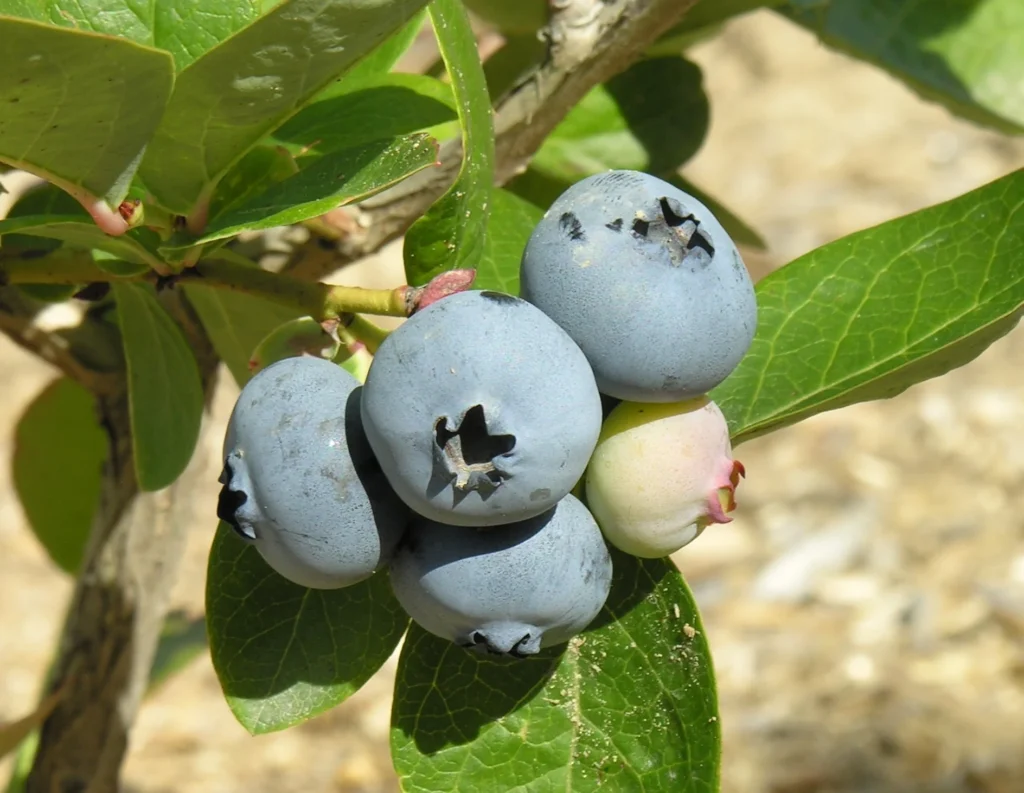
The Northblue blueberry (Vaccinium corymbosum) is a variety of highbush blueberry known for its compact size and cold-hardiness. It’s perfect for gardeners in colder climates, especially in USDA hardiness zones 3-7. Northblue blueberries typically grow to about 18-24 inches tall, making them ideal for container gardening or smaller spaces. The berries are delicious, sweet, and packed with antioxidants.
A close relative of rhododendron, Northblue blueberry bushes feature vibrant foliage that shifts to a stunning red in the fall and clusters of delicate white flowers in early spring. And like all blueberries, they pack a punch in the nutrition department—rich in antioxidants, fiber, and vitamins that promote overall health, making them a great choice for both beginners and experienced gardeners alike.. Add a Northblue blueberry to your garden, and enjoy fresh, homegrown superfood all year long.
Preparing for Planting Northblue Blueberries
Now that you know a bit about the Northblue variety, let’s discuss how to prepare for planting.
Choosing the Right Location
The first step in growing Northblue blueberries is selecting the right location. Blueberries thrive in areas with full sunlight, so make sure your plant gets at least 6-8 hours of sunlight per day. If you’re planting in a container, it’s essential to place the pot in a sunny spot on your patio, balcony, or porch.
Soil Preparation
One of the most important factors in growing Northblue blueberries is the soil. Blueberries prefer acidic soil with a pH between 4.5 and 5.5. If you’re unsure of your soil’s pH, test it before planting. If the soil is too alkaline, you can amend it with organic materials like peat moss or sulfur to lower the pH.
Here’s how you can prepare the soil:
-
Mix peat moss, pine bark, and compost to create a loose, acidic soil mix.
-
For container gardening, make sure to use a well-draining potting mix formulated for acid-loving plants.
When to Plant Northblue Blueberry Bushes
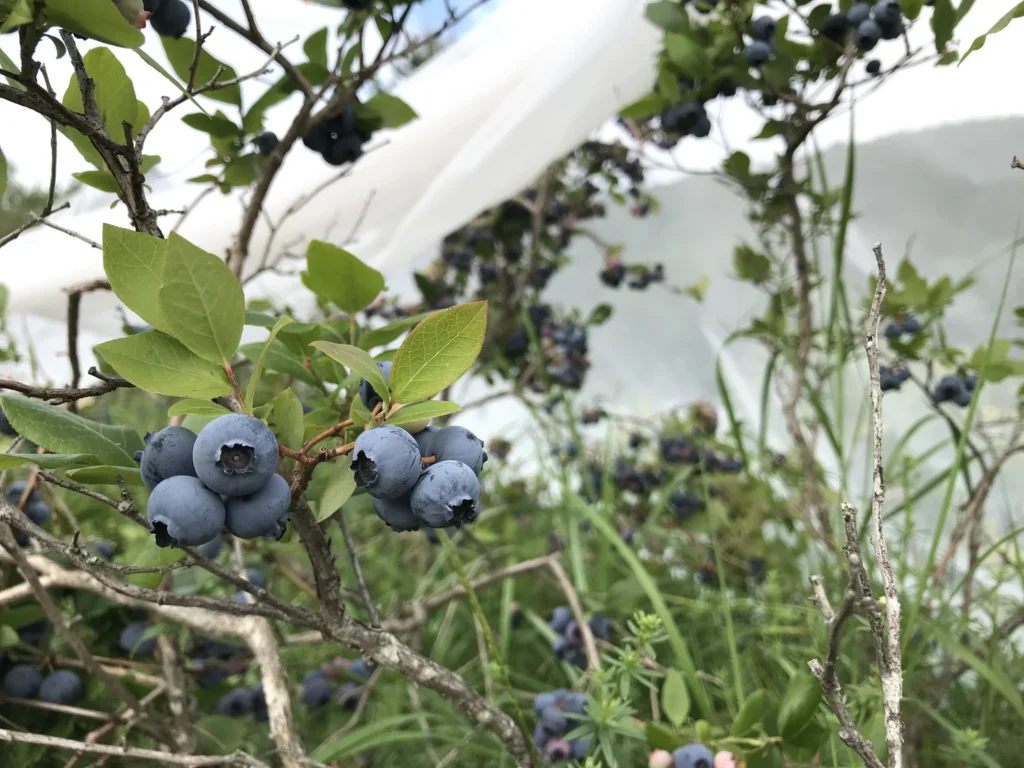
Northblue blueberries thrive when planted in early spring or late fall, depending on your region. For colder climates (Zones 5 and below), it’s best to wait until mid-spring to plant to ensure the bushes have enough warmth to establish roots.
Look for 1- to 3-year-old plants, which are ideal for quicker fruit production. Whether you choose container plants or bare-root, always purchase from a trusted nursery or online retailer to guarantee healthy, high-quality plants that will flourish in your garden.
Planting Depth
When planting Northblue blueberries, dig a hole twice as wide as the root ball but no deeper than the root’s level. Avoid planting the root ball too deep as this can cause the roots to suffocate. After placing the plant in the hole, fill it with your prepared soil mix, and water generously to help settle the soil.
Care Tips for Northblue Blueberries
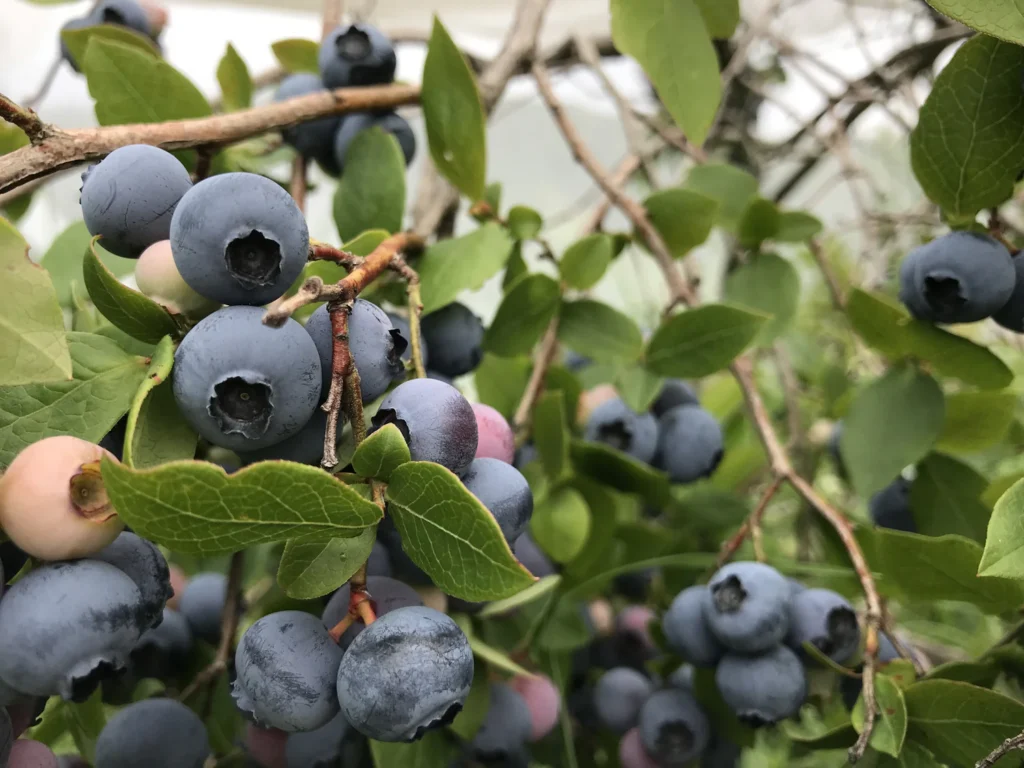
Watering
Proper watering is key to maintaining healthy blueberry plants. Northblue blueberries need consistently moist soil, but they don’t like to be waterlogged. Water the plants deeply, especially during dry periods, but be sure that the soil is well-drained.
Here are a few tips to get it right:
-
Water early in the morning or late in the evening to avoid evaporation.
-
Avoid overhead watering as it can cause fungal diseases. Use drip irrigation or a soaker hose to water at the base of the plant.
Fertilizing
Blueberries are heavy feeders, but they need the right type of fertilizer. Use a fertilizer specifically designed for acid-loving plants, such as an organic blueberry fertilizer or one with a balanced NPK ratio like 10-10-10. Apply the fertilizer in early spring and again in mid-summer, following the instructions on the package.
Be cautious not to over-fertilize, as this can lead to excessive leaf growth and fewer fruits.
Pruning
Pruning is essential for keeping your Northblue blueberries healthy and productive. Pruning helps to remove dead or damaged wood, encourages airflow, and promotes the development of fruit-bearing branches.
Here’s how to prune your Northblue blueberries:
-
In the first two years, focus on removing any weak or damaged branches to encourage strong growth.
-
Once the plant matures, prune in early spring before new growth starts, removing any old, spindly branches and cutting back any that cross or rub against each other.
You may like:
- Glencoe Raspberry Care in Summer: The Ultimate Guide to Watering, Fertilizing, and Pruning in June
- Glencoe Raspberry Care Guide: Grow Thornless Berries Easily
Growing Northblue Blueberries in Containers
If you don’t have space for a traditional garden, don’t worry—Northblue blueberries grow beautifully in containers! In fact, their compact size makes them perfect for container gardening.
Choosing the Right Container
For container gardening, choose a pot that’s at least 18-24 inches in diameter and has drainage holes. This ensures that the roots have enough space to grow and that excess water can escape. You can also use self-watering containers to help with consistent moisture.
Container Soil
Make sure to use an acidic, well-draining potting mix. Avoid regular garden soil, as it may be too heavy and retain too much moisture. A good mix for blueberries should contain peat moss, pine bark, and perlite to ensure proper drainage.
Harvesting and Storing Northblue Blueberries
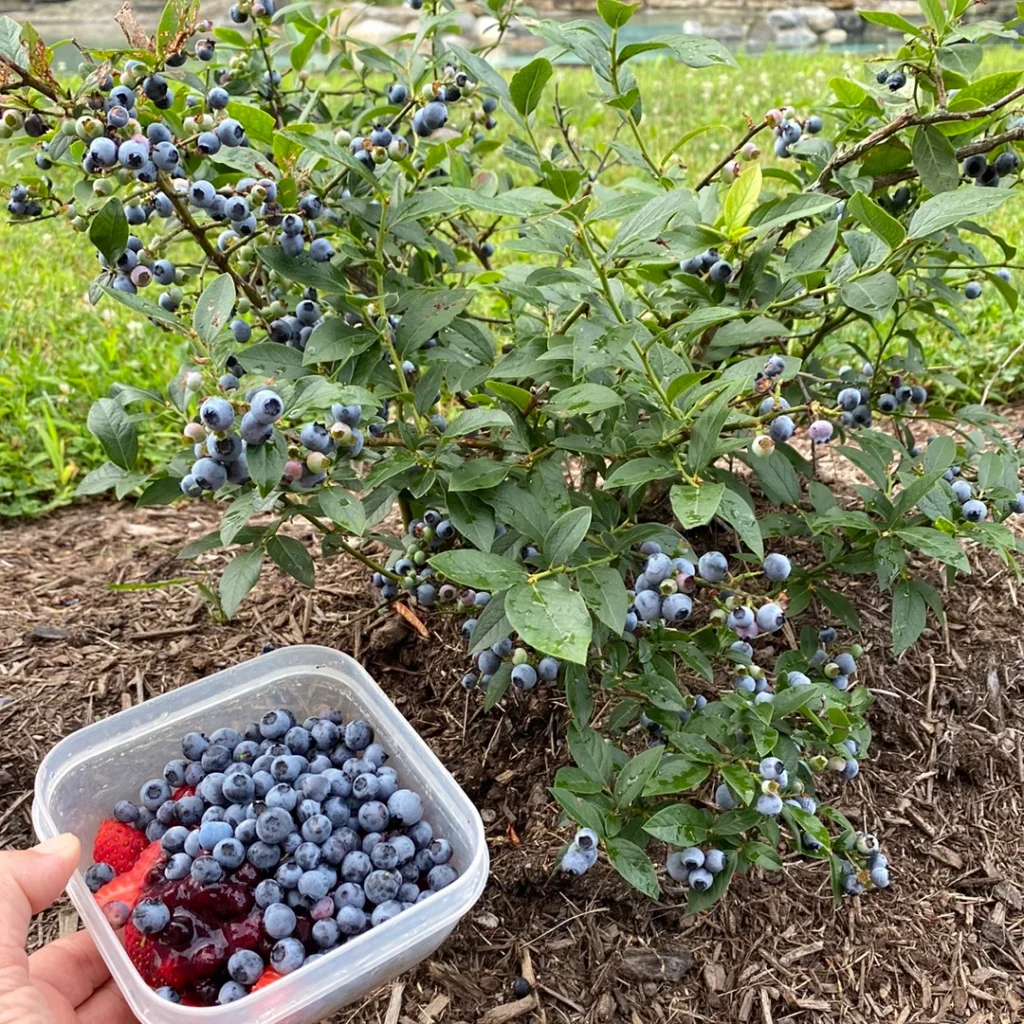
How to Harvest Northblue Blueberries
Northblue blueberries typically ripen for picking between June and August. However, don’t rush to harvest the moment they turn blue. Wait a few extra days—when they’re fully ripe, the berries will gently fall into your hand with little effort.
If you plant 2-year-old Northblue bushes, expect them to start bearing fruit within a year or two. To help the plant establish itself, pinch off any flowers during the first couple of years after planting. Full production will generally occur around year 6, depending on growing conditions and care.
How to Store Northblue Blueberries
Northblue blueberries are perfect for freezing, making them an excellent choice for year-round enjoyment. To freeze them, simply rinse the berries, let them dry, and spread them in a single layer on a baking sheet. Once frozen, transfer them to a storage container or bag for easy access throughout the winter!
Advanced Tips for Successful Harvesting
Northblue blueberries typically start producing fruit in their second or third year. The fruit usually ripens in mid-summer, and the berries are small, sweet, and packed with flavor.
Here are a few tips for a successful harvest:
-
Timing is everything: Wait until the berries are fully ripe before harvesting. Ripe berries should be deep blue with a slight powdery coating.
-
Pick gently: Blueberries should be harvested by gently rolling them off the plant. Avoid pulling them to prevent damage.
Troubleshooting Common Issues
Even with the best care, sometimes issues arise. Let’s address some common problems and how to solve them.
Pests and Diseases
While Northblue blueberries are relatively resistant to pests and diseases, they can still fall victim to a few issues, including:
-
Birds: Birds love blueberries! To protect your harvest, consider using bird netting or scare devices around your plants.
-
Fungal diseases: Keep an eye out for powdery mildew, rust, or root rot. Ensure your plant has good airflow and avoid overhead watering.
-
Insects: Aphids and scales can sometimes be a problem. Use an insecticidal soap to control these pests.
Environmental Stressors
Northblue blueberries are cold-hardy but may still face challenges in extreme temperatures, especially during late spring or early fall frosts. If you’re growing your plant in a container, bring it indoors or move it to a protected location during frost warnings.
Frequently Asked Questions (FAQs)
-
How do I plant Northblue blueberries?
-
Prepare a sunny location, ensure your soil is acidic, and plant your Northblue blueberries 18-24 inches apart. Water thoroughly after planting.
-
-
Can Northblue blueberries grow in pots?
-
Yes! Northblue blueberries are perfect for container gardening. Use a large container with good drainage and an acidic soil mix.
-
-
What is the best fertilizer for Northblue blueberries?
-
Use an organic fertilizer designed for acid-loving plants, applying it in early spring and mid-summer.
-
-
How do I prune my Northblue blueberries?
-
Prune in early spring, removing any dead or damaged wood. Focus on shaping the plant and promoting airflow to avoid fungal diseases.
-
Conclusion
By now, you should have a solid understanding of how to care for your Northblue blueberries. With proper preparation, consistent care, and a little attention to detail, you’ll enjoy a bountiful harvest of delicious berries for years to come.
So, what’s next? Get started on your blueberry gardening journey today. Whether you’re planting in the ground or in containers, follow these tips, and your Northblue blueberries will thrive. Happy gardening!

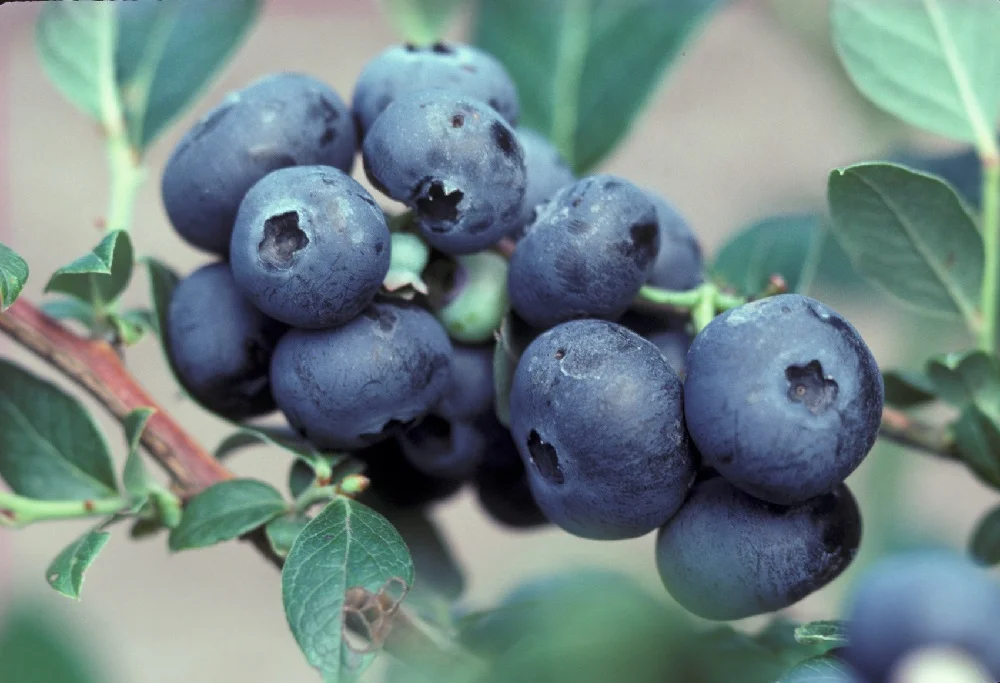
7 Vegetables to Plant in December for a Bountiful Winter Harvest
Winter gardening is a challenge many new gardeners shy away from. But if you’re among [...]
Dec
9 Common Christmas Cactus Problems and How to Fix Them
Have you ever walked past your Christmas cactus and wondered why it suddenly looks sad? [...]
Nov
Swedish Ivy Care: How to Grow a Healthy, Thriving Plant
Have you ever looked at your Swedish Ivy and wondered why the leaves are turning [...]
Nov
Avoid These 10 Garlic Planting Mistakes for Bigger, Healthier Bulbs
Growing garlic at home is one of the most satisfying things a gardener can do [...]
Nov
How to Prevent Christmas Cactus Bud Drop: Tips for a Healthy Bloom
Have you ever noticed your beautiful Christmas cactus (Schlumbergera) starting to lose its buds just [...]
Nov
Discover 7 Stunning Types of Night-Blooming Cereus
Have you ever waited for a flower that only opens at night and then disappears [...]
Nov